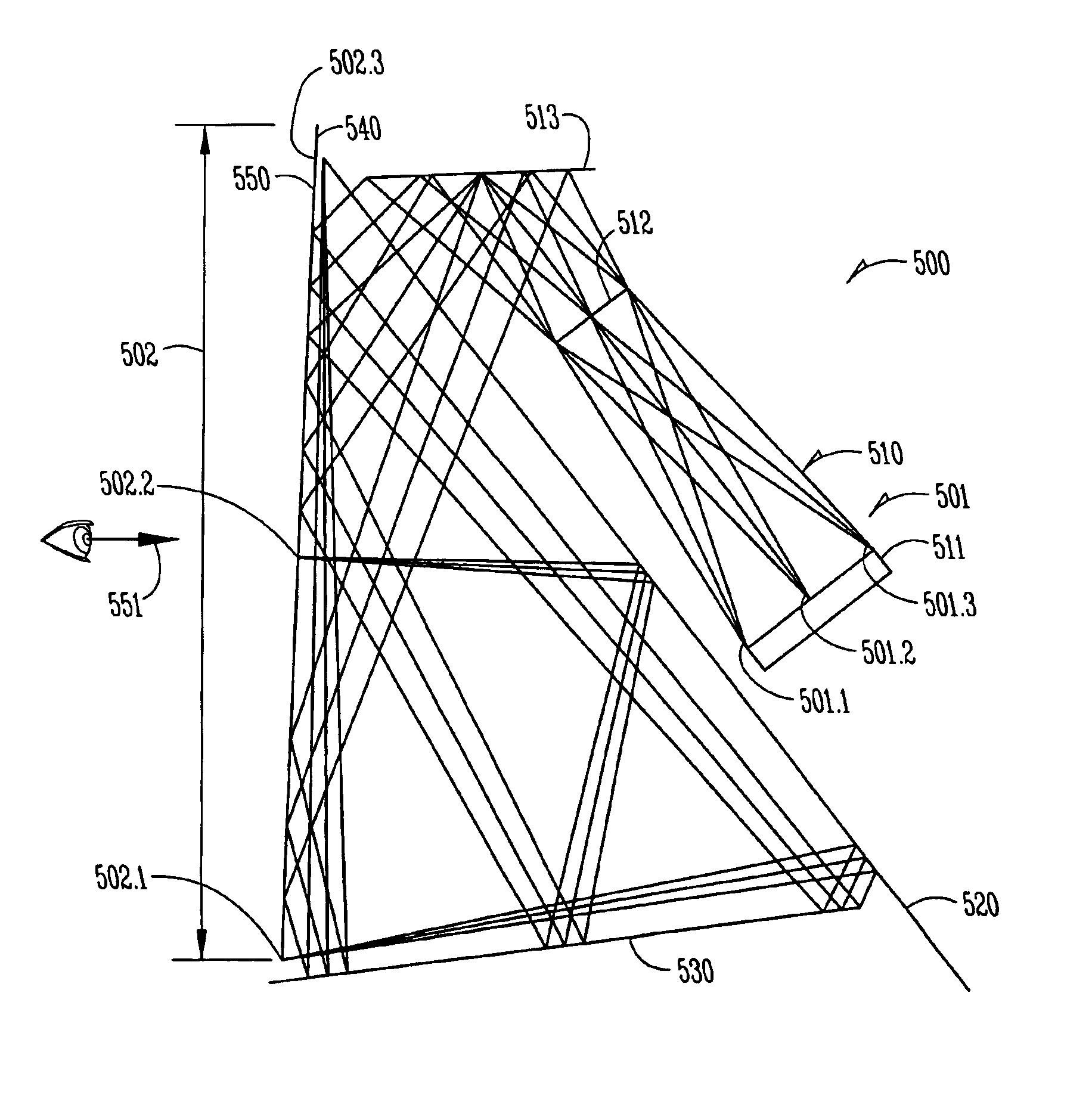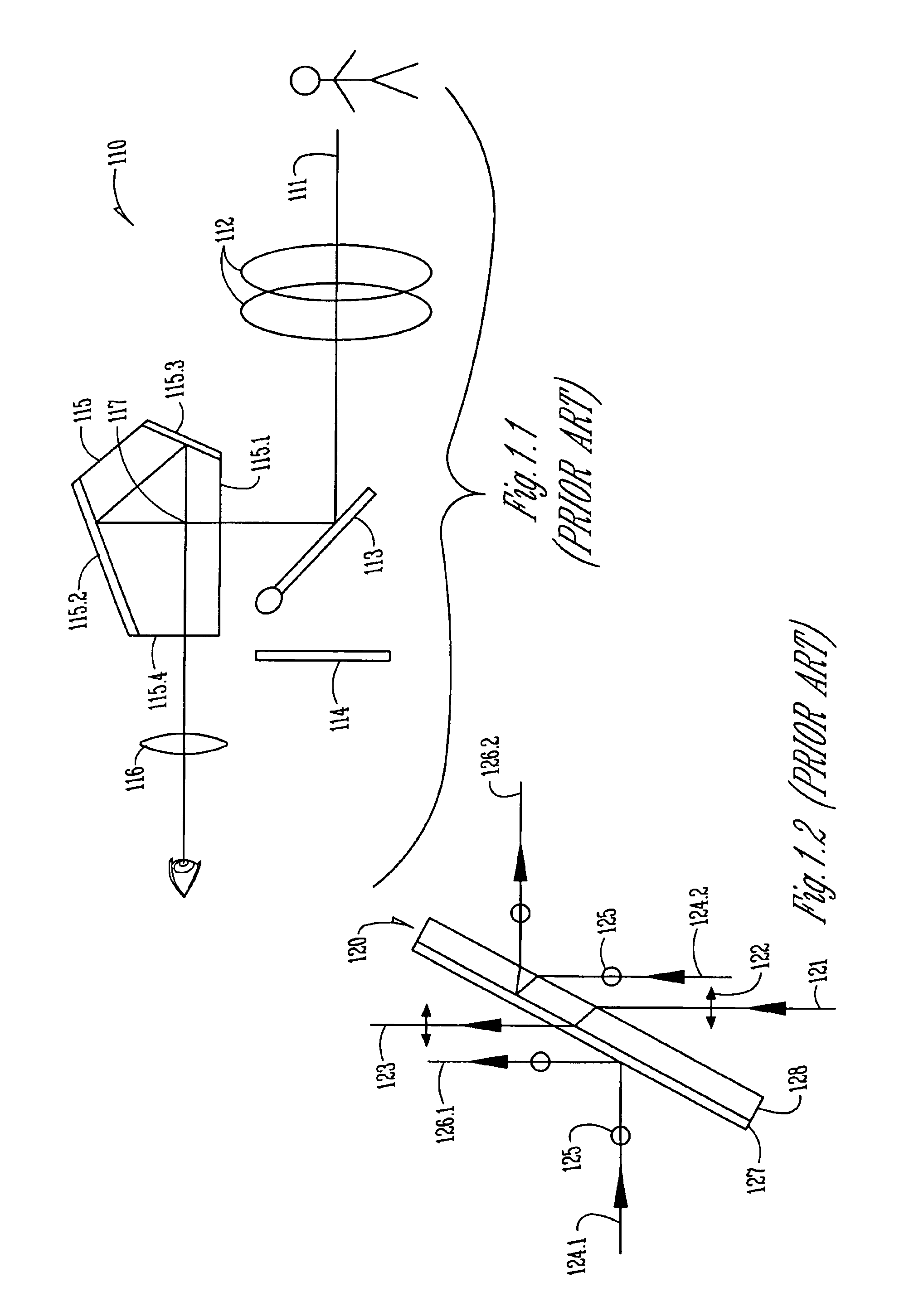Optical devices employing beam folding with polarizing splitters
a technology of optical beams and splitters, applied in the field of optical systems, can solve the problems of large size restrictions in the processing of optical beams, large space occupation of beam folders implemented with conventional reflectors, and large space occupation of beam folders, etc., and achieve the effect of increasing optical length and facilitating beam manipulation
- Summary
- Abstract
- Description
- Claims
- Application Information
AI Technical Summary
Benefits of technology
Problems solved by technology
Method used
Image
Examples
Embodiment Construction
[0022]FIG. 2 shows schematically an optical device 200 for folding an incident beam 201 to produce an exit beam having a beam length greater than an associated dimension 203 of the device. Light 201 from any type of source 210 has a polarization indicated at 204. The source could be inherently polarized, or a conventional analyzer (not shown) could be placed in the path of incident beam 201 into or within device 200, even at the exit. The polarization mode is arbitrary; it could be linear vertical or horizontal, circular right- or left-handed, etc. A polarizing beam splitter 220 is positioned so that its rejection axis lies along the polarization mode of beam 201. Therefore, the beam is reflected from splitter 220. The reflected beam then passes through polarizing bean splitter 240, whose rejection axis is perpendicular to that of splitter 220, and encounters a reflecting repolarizer 230. The beam, now having a different or opposite polarization, as symbolized at 205, next encounter...
PUM
 Login to View More
Login to View More Abstract
Description
Claims
Application Information
 Login to View More
Login to View More - R&D
- Intellectual Property
- Life Sciences
- Materials
- Tech Scout
- Unparalleled Data Quality
- Higher Quality Content
- 60% Fewer Hallucinations
Browse by: Latest US Patents, China's latest patents, Technical Efficacy Thesaurus, Application Domain, Technology Topic, Popular Technical Reports.
© 2025 PatSnap. All rights reserved.Legal|Privacy policy|Modern Slavery Act Transparency Statement|Sitemap|About US| Contact US: help@patsnap.com



